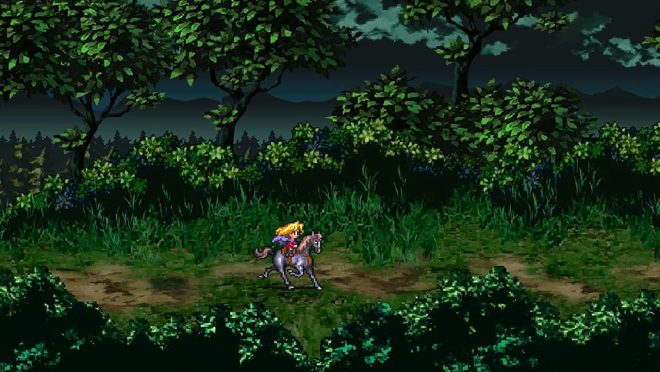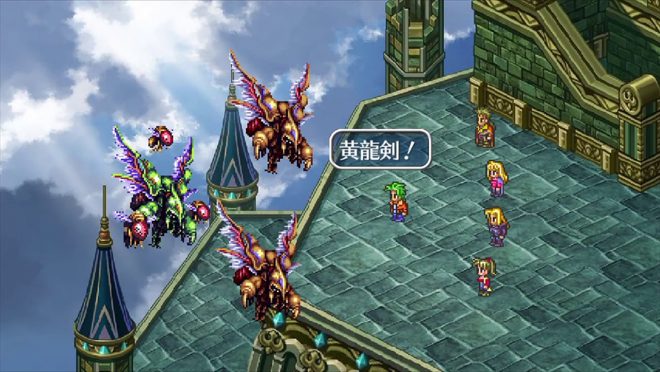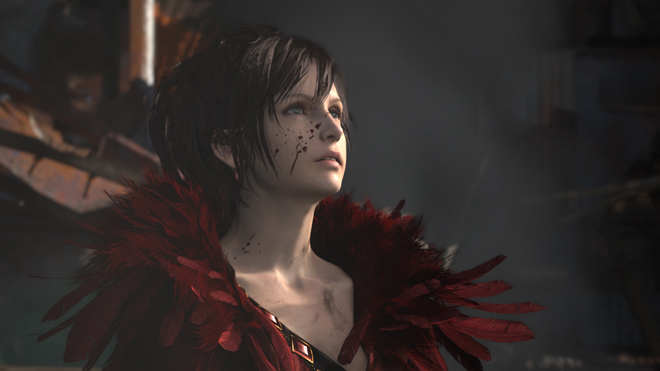Don’t Forget About the SaGa Games Square Enix Announced

Square Enix announced and showcased several great-looking titles at their conference last week, with the centerpieces among their lineup being Final Fantasy VII Remake and Marvel’s Avengers. There were several smaller titles showcased that aren’t being discussed as much, but should not be forgotten. The SaGa games announced are the biggest among them.
Yes, that’s “SaGa games” because Square Enix’s benevolent localization team is bringing two of them to us: The remake of Romancing SaGa 3 and SaGa Scarlet Grace: Ambitions. Anyone who follows news of Japanese games way too closely like me has likely heard of both games, and they’ve been a long time in coming.

Romancing SaGa 3 is a remake of the Super Famicom title of the same name with new features, and will mark the first time it will be officially localized for western territories. While this is coming after the remake of the first Romancing SaGa on PlayStation 2, titled Romancing SaGa: Minstrel Song, this version won’t be a 3D recreation like that one. The presentation will instead follow in the footsteps of the recent Romancing SaGa 2 remake in being similar to the original version, but with much prettier animated sprites and backgrounds. The new sprites, by the way, put the hideous-looking mobile ports of Final Fantasy V and Final Fantasy VI to shame.
The remake has been in the works for a while, originally announced in March 2017 for Vita and smartphones in Japan. This happened before RM2 was announced for all current platforms, which released worldwide in December 2017, and Square Enix wanted to put space between that title and its successor. The team also had more time to continue working on polishing the remake.

Like previous games, RM3 has the appearance of a traditional Japanese RPG, but includes several differences to make it, and franchise, stand on its own. The player can choose from eight characters with alternating scenarios when the game begins, but more will join the party along the way. Character stats increase depending on how they participate in battle. They also each have Hit Points (HP) and Life Points (LP), the latter of which decreases when hit after their HP reaches zero. If the LP hits 0, they’ll leave the party, but can be recruited again later. That is, unless they’re the main player character, where losing all LP results in a Game Over.
If any of these unique systems sound familiar, it’s because many SaGa developers worked on this series after the very unique Final Fantasy II. Several of them are still at Square Enix after around 30 years, including SaGa creator, director, and writer Akitoshi Kawazu — though he doesn’t fulfill all those roles these days.
RM3’s Japanese date has been shuffled around a bit. It was initially announced for an early 2019 release, but was moved to a vague “TBA 2019” timeframe. This might explain why it was announced for western territories without any kind timeframe, but perhaps this means they want to release it worldwide simultaneously when it arrives on (*breathes*) PlayStation 4, Vita, Xbox One, Switch, PC, and smartphones. Hopefully Square Enix doesn’t take long to provide a date.

SaGa: Scarlet Grace was the first brand-new title in the series to arrive in almost precisely 14 years when it released for Vita in 2016. The series took a long break after the much-maligned Unlimited Saga released for PS2 in 2002, a game whose systems were a bit too unique and esoteric for their own good. Scarlet Grace was developed to commemorate SaGa’s 25th anniversary, and involved reassembling many of the old team members. It was well received by fans, but never localized thanks to being a text-heavy RPG on Vita in 2016. Fortunately for us, Square Enix ported the game to several other systems and added new features, which made it easier to justify a localization; so, here we are.
Scarlet Grace has a mostly-3D presentation, and starts by letting players choose from four characters with distinct scenarios. Interestingly, the game will recommend a character to start with for anyone indecisive about the choice after a series of questions are answered. Like the aforementioned RM3, other characters will eventually join the party, with up to four being able to participate in battle. The game has a nonlinear narrative where players can choose to tackle events in any order, or completely skip some of them. The decisions will impact how the story develops.

It wouldn’t be a SaGa game if it didn’t have gameplay-related oddities, which come in a couple of forms. HP and LP return here, though this time, LP depletes for each character depending on how often they participate in battle. If it diminishes completely for a character, they can’t be used in battle. But it can be replenished in towns in exchange for materials. There are also Behaviour Points (BP), needed to perform actions in battle. The amount of BP necessary for an attack depends on its power, and characters will have to skip a turn if no BP is available for them to use. The game also has no explorable towns or dungeons. After all these years, it’s nice that the SaGa team still has plenty of unique ideas.
The updated port of Scarlet Grace released for PS4, Switch, PC, and mobile platforms in August last year. No date was given for the western release, which will arrive with the added “Ambitions” subtitle — presumably to distinguish it from the Vita version. Hopefully they don’t make us wait too long for a date.
Square Enix will ideally promote these games well enough that JRPG fans will know when they release, because otherwise they’ll be ignored in the shuffle among all their other games — especially depending on when they release. It would be nice if this post helped, but I can only delude myself so much. But don’t expect this to be the last post about them.





